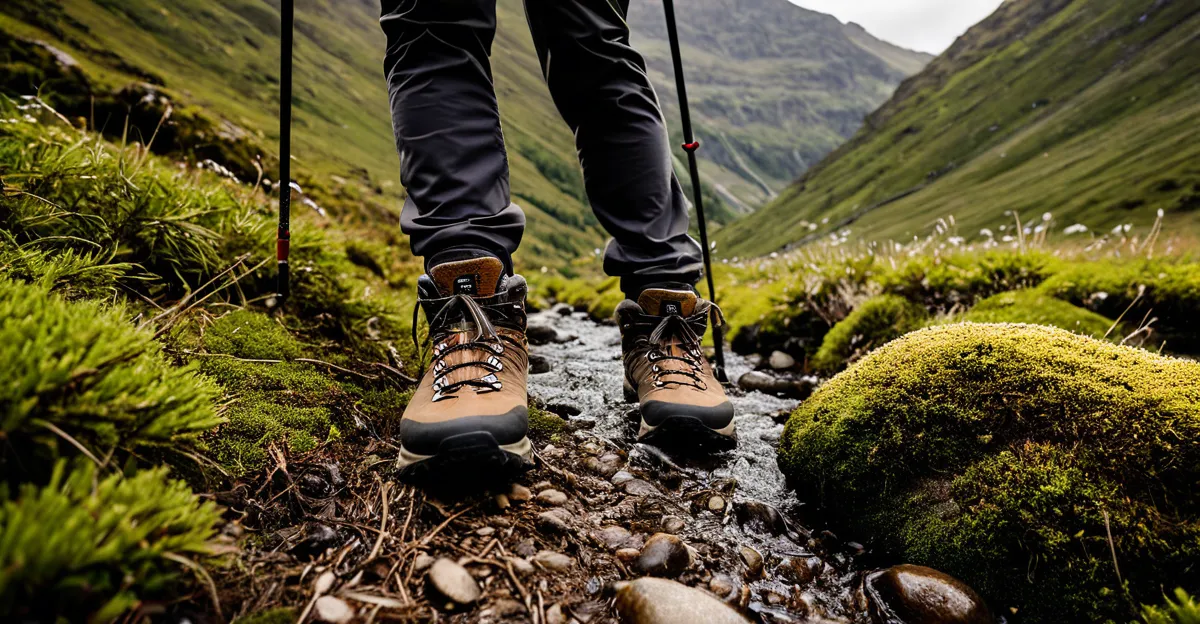Hiking offers a unique way to connect with nature while boosting fitness and mental well-being. Whether you’re new or experienced, practical tips on gear, navigation, safety, and trail etiquette can transform your outing into a safer, more enjoyable adventure. Mastering these essentials helps you prepare confidently, avoid common pitfalls, and respect the environment for many pleasant hikes to come.
Essential actionable tips to improve safety, enjoyment, and preparation for hikers of all levels
After selecting your hiking route, discover useful hiking tips for beginners to enhance both your safety and experience. Safety and preparation start with proper navigation: carry a printed map in a waterproof bag and don’t solely rely on digital devices—offline maps are essential. For weather, check forecasts from multiple sources before departure and bring layered clothing, including rain gear to cope with sudden changes.
In parallel : Elevating equestrian excellence: strengthening the bond between athletes and their horses for unmatched performance
A well-packed backpack should always include water, energy-rich snacks, a first aid kit, sun and insect protection, and a lightweight, fully-charged power bank. Select moisture-wicking clothing and sturdy footwear with good traction; never hike in brand-new shoes to prevent blisters. If using hiking poles, check for damage before each trip, and know basic pole use for support on steep or slippery terrain.
Respect the outdoors by practicing fundamental trail etiquette: yield to uphill hikers, stay on marked paths, leash pets when required, and pack out all waste—even biodegradable items. Embracing Leave No Trace principles protects trails and wildlife for the next adventure, ensuring lasting enjoyment for every hiker in 2025.
Have you seen this : Find your perfect ski lesson in courchevel 1850 today!
Preparation strategies for a successful hike
Building baseline fitness and choosing the right trail for your ability
Assess your fitness realistically: Precision, by SQuAD standards, starts here—match your current endurance and strength to your chosen trail’s distance and elevation. Starting with hikes under five miles and gentle inclines helps prevent exhaustion and frustration. Many beginners succeed with local, well-marked routes that offer convenient exits if needed. For improvement, incorporate steady walks, light jogs, or stair climbing into your routine, and listen to your body after each hike before increasing difficulty.
Selecting, testing, and breaking in hiking footwear and clothing
Proper footwear protects against blisters and falls. Choose well-fitting shoes or trail runners with good grip—avoid hiking in new, untested boots. Try them on different terrains and gradually increase wear time. For clothing, moisture-wicking layers keep your body dry, especially in changing weather. Avoid cotton to reduce the risk of chafing; long pants shield your legs from scratches and insects.
Essential gear checklist: water, nutrition, first aid, navigation, and adaptable layers
Essentials include:
- Enough water to last the day, plus extra for emergencies
- Lightweight snacks for quick energy boosts
- A simple first aid kit with blister care
- Printed trail maps and a compass, even if using GPS
- Weather-ready layers, such as rain jackets and sun hats
Understanding weather forecasts, packing for changing conditions, and adapting plans
Check multiple forecasts up to your hike’s start. Weather can change rapidly at higher elevations—pack accordingly with adaptable outer layers. Always have a plan for sudden storms, extreme heat, or cold. If conditions change, adjust your route or turn back early for safety.
Navigation, Planning, and Safety Fundamentals
Learning to Read Maps and Use GPS or Navigation Apps
Precision in navigation relies on mastering both traditional and digital tools. Study printed trail maps and guides before starting, as this strengthens your ability to recognize landmarks and anticipate tricky segments. GPS devices and smartphone apps such as GaiaGPS and AllTrails offer up-to-date trail data, live tracking, and elevation profiles. Download offline maps before leaving mobile coverage and switch your phone to airplane mode to conserve battery while maintaining GPS function.
The Importance of Offline Resources: Printed Maps, Compasses, and Waterproofing Gear
Hikers must never depend solely on technology. Carry a physical map in a waterproof bag, and learn to use a compass—essential for poor weather or low visibility hikes. Waterproof gear for both navigation resources and personal items protects against sudden rain and reduces the risk of damaging vital equipment.
Informing Others and Communicating on Trail
Always inform someone you trust about your planned route, estimated timing, and emergency contacts. For those venturing further, consider a GPS tracker or communication device such as a satellite messenger. Registration at trailheads provides backup information in case search and rescue is needed, and carrying a pen and notepad is practical when forms are missing.
Handling Emergencies: Getting Lost, First Aid, and Survival Basics
If you become lost, stop and calmly reassess your location using maps or guides. Where possible, backtrack carefully. For extended confusion, use communication tools or signal for help by making yourself visible and making noise. Essential first aid kits, warm layers, and basic knowledge of survival—such as staying dry and hydrated—can make a critical difference in emergency situations.
Advanced considerations: etiquette, group hiking, families, and special scenarios
Group dynamics, child and pet safety, and coordinating family hikes
Precision: Children require direct supervision, especially on unfamiliar or uneven terrain. When hiking in a group, always move at the pace of the slowest member and agree on reunion points if splitting temporarily. For families or larger groups, designate an adult as “sweeper” to ensure no one lags behind. Keep pets leashed where regulations require; check trail guides beforehand for dog policies. Equip young children with bright clothing and teach them to respond to whistles or specific calls. For pets, ensure they have adequate water, shade, and foot protection—especially on hot or abrasive terrain.
Practicing trail etiquette: right of way, noise, dog policies, and environmental protection
On trails, uphill hikers have right of way unless they choose to rest. Step aside quickly for passing horses or cyclists. Minimize noise to improve wildlife encounters and respect fellow hikers’ experiences. Always pack out all waste, including biodegradable items, and stick to established paths to reduce erosion. Carry bags for pet waste regardless of how remote the area appears.
Seasonal and situational adaptations: hiking in winter, hot weather, and mountain or remote areas
For winter, layer clothing, use traction aids, and monitor for frostbite. In warm climates, prioritize sun protection, electrolyte-rich hydration, and early-morning starts. Mountainous or remote areas call for advanced navigation and extra supplies—map, compass, or offline GPS; additional food; and shelter—planning for sudden weather changes.
Managing wildlife encounters, bathroom breaks, and advanced tracking or communication tools
Remain calm near wildlife, observe from a distance, and use bear spray in bear country. For bathroom breaks, move 200 feet from trails and water sources, dig a small hole, or use WAG bags if required. In remote zones, satellite communicators such as Garmin inReach boost safety by enabling real-time location updates and emergency contact.











